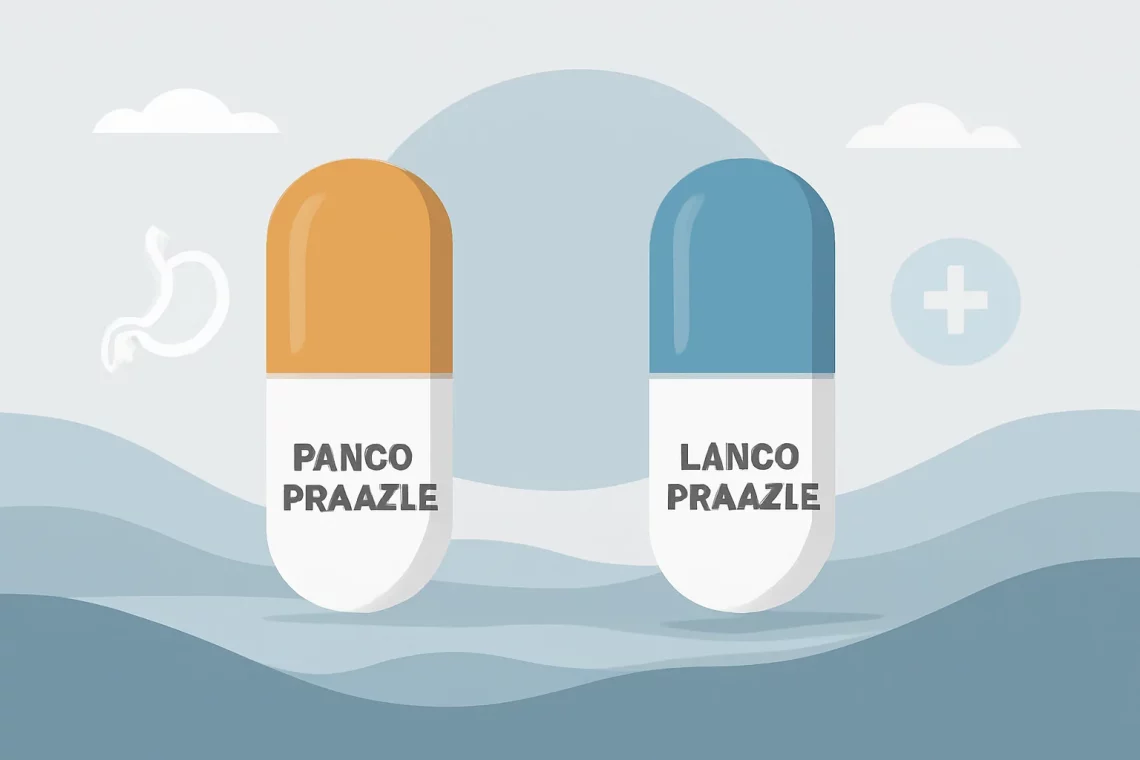
Pantoprazole vs Lansoprazole Which is Better for Acid Reflux Treatment
Pantoprazole and lansoprazole are two widely used medications belonging to a class of drugs known as proton pump inhibitors (PPIs). These medications play a crucial role in managing conditions associated with excessive stomach acid production, such as gastroesophageal reflux disease (GERD), peptic ulcers, and Zollinger-Ellison syndrome. By effectively reducing the amount of acid produced by the stomach, pantoprazole and lansoprazole can alleviate symptoms such as heartburn, regurgitation, and discomfort associated with these conditions.
The mechanism of action for both pantoprazole and lansoprazole involves the inhibition of the proton pump in the gastric lining, which is responsible for the secretion of gastric acid. Despite their similar functions, there are distinct differences in their pharmacokinetics, efficacy, and side-effect profiles that may influence a physician’s choice between the two. Understanding these differences is essential for patients and healthcare providers alike to ensure optimal treatment plans tailored to individual needs. Through careful consideration of factors such as patient history, potential side effects, and drug interactions, healthcare professionals can make informed decisions regarding the use of pantoprazole or lansoprazole in the management of acid-related disorders.
The growing prevalence of acid-related gastrointestinal disorders has led to increased interest in the role of PPIs, prompting ongoing research to evaluate their long-term safety and effectiveness. As a result, discussions surrounding the use of pantoprazole and lansoprazole often extend beyond their therapeutic benefits to encompass broader implications for patient health.
Pantoprazole: Mechanism of Action and Uses
Pantoprazole works by specifically targeting the proton pump in the stomach lining, effectively blocking the final step of gastric acid production. This process helps to reduce the acidity of the stomach contents, providing relief from symptoms associated with excessive acid production. Pantoprazole is commonly prescribed for conditions such as GERD, where chronic acid reflux leads to inflammation and damage to the esophagus.
In addition to GERD, pantoprazole is often utilized in the treatment of peptic ulcers, both gastric and duodenal. By reducing gastric acid secretion, it not only promotes healing of the ulcer but also helps to prevent recurrence. Furthermore, pantoprazole is sometimes used in combination with antibiotics to eradicate Helicobacter pylori, a bacterium linked to the development of gastric ulcers.
The drug is typically administered orally in the form of delayed-release tablets or intravenous formulations for patients who may have difficulty swallowing or require rapid treatment. The onset of action for pantoprazole is generally within one hour, with peak effects occurring around two to four hours post-administration.
Despite its efficacy, pantoprazole is not without potential side effects. Common adverse reactions may include headaches, diarrhea, nausea, and abdominal pain. More serious side effects, although rare, can include allergic reactions and kidney issues. It’s important for patients to discuss their medical history with their healthcare provider to ensure pantoprazole is a suitable option for their specific health needs.
Lansoprazole: Mechanism of Action and Uses
Lansoprazole, like pantoprazole, functions as a proton pump inhibitor by inhibiting the activity of the proton pumps located in the stomach lining. This inhibition leads to a significant reduction in gastric acid secretion, thereby providing symptomatic relief for conditions caused by excess acid production.
The uses of lansoprazole closely mirror those of pantoprazole, being effective in treating GERD, peptic ulcers, and conditions such as Zollinger-Ellison syndrome. Lansoprazole is particularly noted for its rapid absorption and effectiveness; it can provide relief from symptoms within one to two hours of administration.
The medication is available in various forms, including orally disintegrating tablets and capsules, making it convenient for patients to take. Additionally, lansoprazole can be used in combination therapy for the treatment of H. pylori infections, helping to improve eradication rates when used alongside antibiotics.
While generally well-tolerated, lansoprazole may also present side effects similar to those of pantoprazole, including headaches, diarrhea, and nausea. Long-term use has been associated with certain risks, such as nutrient malabsorption, particularly vitamin B12 and magnesium, which can lead to deficiencies over time. As with any medication, it is essential for patients to have an open dialogue with their healthcare provider to weigh the benefits against potential risks, especially when considering long-term therapy.
Comparative Efficacy: Pantoprazole vs. Lansoprazole
When comparing pantoprazole and lansoprazole, several factors come into play that may influence a healthcare provider’s prescribing decision. Both medications are effective in reducing gastric acid secretion and alleviating symptoms associated with acid-related disorders. However, studies have indicated some differences in their efficacy profiles, onset of action, and potential side effects.
In terms of efficacy, both pantoprazole and lansoprazole have demonstrated similar outcomes in clinical trials for treating GERD and peptic ulcers. However, some research suggests that lansoprazole may work more quickly to relieve symptoms, while pantoprazole may be more effective in maintaining acid suppression over a longer duration.
The side effect profiles of both medications are relatively comparable, though individual responses can vary. Some patients may tolerate one medication better than the other based on their unique health circumstances and medical history.
Moreover, drug interactions can differ between the two, as lansoprazole may have a more significant interaction with certain medications due to its effects on liver enzymes. This aspect can play a crucial role in determining which PPI is appropriate for patients taking multiple medications or those with liver conditions. Therefore, healthcare providers must consider each patient’s overall medication regimen when choosing between pantoprazole and lansoprazole.
Safety Profile and Long-term Use Considerations
The long-term use of proton pump inhibitors, including pantoprazole and lansoprazole, has been the subject of extensive research due to potential safety concerns. While these medications are effective in managing acid-related disorders, their prolonged use raises questions about possible adverse effects, including the risk of certain complications.
One of the most commonly discussed risks associated with long-term PPI use is the potential for gastrointestinal infections. By reducing stomach acidity, these medications may decrease the stomach’s ability to act as a barrier against bacteria, which can lead to an increased risk of infections such as Clostridium difficile.
Additionally, long-term PPI use has been linked to deficiencies in essential nutrients, particularly vitamin B12 and magnesium. These deficiencies can result in a range of health issues, including anemia and cardiovascular problems, emphasizing the importance of monitoring nutrient levels in patients on prolonged PPI therapy.
There are also concerns regarding the potential association between long-term PPI use and kidney disease. Some studies have suggested an increased risk of chronic kidney disease among long-term PPI users, prompting healthcare providers to carefully evaluate the necessity of ongoing treatment for individual patients.
Overall, while pantoprazole and lansoprazole are effective medications for managing acid-related disorders, their long-term use should be regularly assessed by healthcare professionals to balance the benefits against potential risks. Patients should engage in open discussions with their healthcare providers regarding their treatment plans, especially if they require extended therapy.
**Disclaimer:** This article is for informational purposes only and is not intended as medical advice. Always consult a healthcare professional for medical concerns or questions regarding treatment options.




